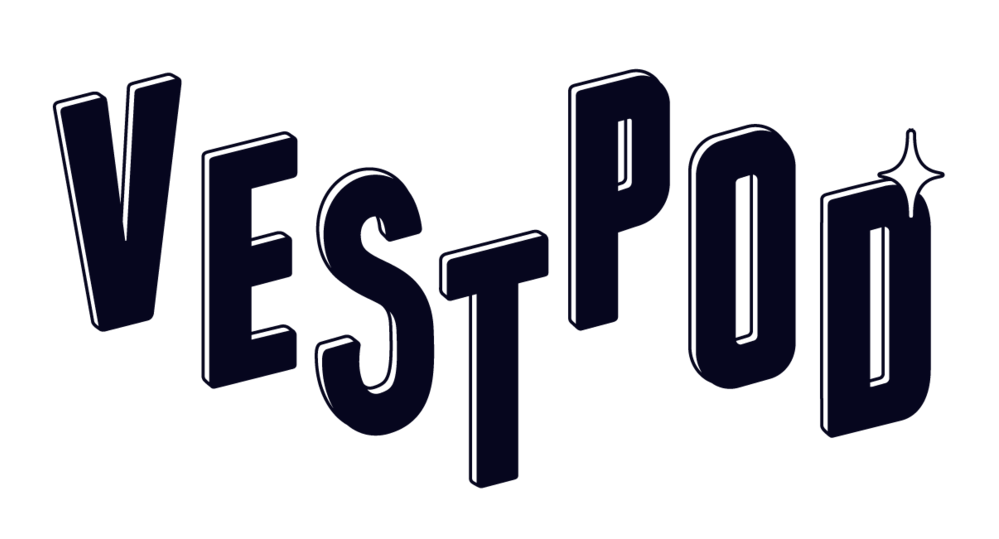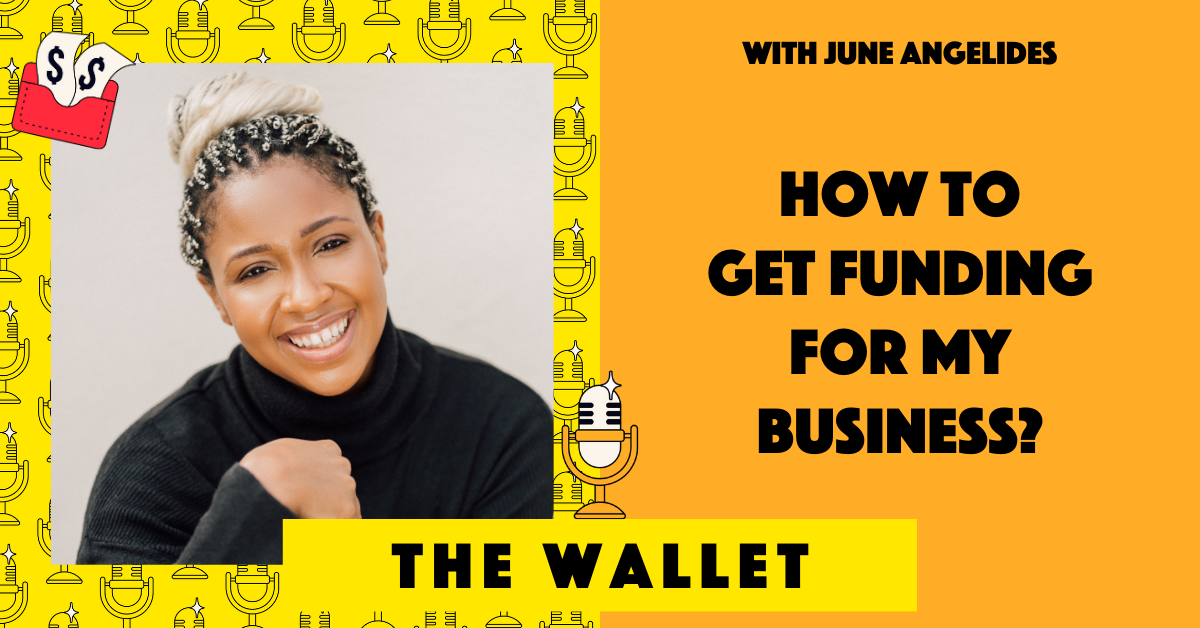How to Get Funding For Your Business, with June Angelides
Date: Oct 1, 2020
The UK Rose Review recently highlighted that only 1% of all venture funding goes to businesses founded by all-female teams.
The British Business Bank’s UK Venture Capital & Female Founders report found that “for every £1 of VC investment, all-female founder teams get less than 1p.”
So we know there is a real need for funding to be directed towards female entrepreneurs, but how do we get more money for women-led businesses?
In this episode of The Wallet, we are joined by June Angelides, an early stage investor at Samos Investments and an entrepreneur herself, as founder of the social enterprise, Mums in Technology, which was the first child-friendly coding school in the UK.
June is a Mum, a Wife, a Founder, an Investor and an all round role model passionate about using her influence to create opportunities for under-represented groups in tech and getting more money into the hands of female founders.
In this episode June gives us a behind the scenes look at the role of an investor (she’s a venture capitalist), what the funding process entails for both founders and investors and where to start if you’re considering funding for your business.
***
You can listen (49 min) and subscribe here:
***
1. What is venture capital?
Venture capital (VC) is a form of investment for early-stage, high-growth potential businesses. VC plays a particularly important role in the period of a company’s lifecycle as it begins to commercialise its innovation. In a HBR study, it was estimated that more than 80% of the money invested by venture capitalists goes into building the infrastructure required to grow the business – activities such as marketing, manufacturing and sales and for providing fixed assets and working capital.
The idea behind VC is to invest in the balance sheet and infrastructure of a company that shows promise until it reaches sufficient scale such that it can be acquired by a larger company or such that institutional public-equity markets can step in to provide liquidity. Hence, when a venture capitalist invests in an entrepreneur’s idea, it is with a mind to exit the investment with the help of an investment banker after a short period of time.
The VC funding niche exists due to the rules of capital markets – it exists because in the earliest stages of a start-up, an entrepreneur will not have enough hard assets against which to secure funding from other, more traditional financial institutions that require substantial capital requirements. Investment banks and public equity are both constrained by regulations that are designed to protect institutional and retail investors. VC plugs the gap between early funds for getting a business off the ground (for example, bootstrapping and government grants) and traditional, lower-cost sources of capital. Plugging this gap requires superior returns on investment to compensate venture capitalists for investing in inherently riskier business ventures. VC funding typically comes from well-off private investors, investment banks and other financial institutions all of whom can provide technical, managerial and financial support. The major downside of VC funding from the perspective of entrepreneurs is that the venture capitalist invested in their start-up will have equity in their business and, therefore, have power when it comes to making pivotal decisions.
2. A day in the life of a venture capitalist
A day in the life of a venture capitalist can be highly varied – this is one of the things that June loves about her job. A second thing June loves about her job is the people. Typically, her day will revolve around meeting lots of founders of interesting companies - in line with her investment thesis - that are looking to raise money to take their business to the next level. June believes that building stronger relationships, where you can continually learn from others around you, is the key to success in VC – fortunately, June believes that she is well equipped for this challenge having always been a people person. For this reason, June spends a lot of her time with Samos Investments’ existing portfolio companies’ founders, advising on priority growth areas which could include things like brand loyalty strategies, for example, and looking to tap into their specialist insights on the industry in which they operate. Attending networking events are also a must for June since it enables her to find new deals and spread awareness of both her personal and professional brand. Keeping in touch and up to date with such an extensive network requires ample organisation and planning skills – June jokes that most of her job consists of sending out meeting invites.
It is also paramount for June to be ahead of the curve in terms of industry trends since this allows her to find the best deals and target the hottest portfolio companies. June is required to filter through an extensive list of potential portfolio companies in attractive, high-growth industries that are looking to raise money in the present, at the right amount and with businesses that are aligned with her investment thesis. To achieve this, market research is a core component of June’s job.
3. Stages of business funding
Irrespective of where you are in your start-up journey, you will need money to keep the momentum of your business going. Your ability to raise money will determine how far your business venture can go and understanding the different stages of business funding will equip you with a clear path to what both you as the entrepreneur and the investor stand to gain from the exchange.
The first stage in funding your business will usually consist of bootstrapping and soft loans. Bootstrapping your start-up means growing your business organically with no VC funding or outside investment. Hence, during this funding phase, the entrepreneur must rely on their own savings and income to operate and expand their business. While this type of funding leaves you with limited capital to work with, the positive is that you can maintain total control over all decisions and the business itself. Soft loans are also a significant contributor at the earliest stage of funding. Soft loans are loans with below-market interest and better terms than you would be able to get under an agreement with a professional investor. Such loans typically originate from friends and family who want to support you financially in your start-up venture.
As your business’ needs grow and you want to increase your funding with your business’ expansion in mind, angel investment is likely to be the second stage in your funding journey. An angel investor is a high net worth individual who provides capital for a start-up business in exchange for ownership equity. Angel investors offer support to start-ups at a point where most investors are not prepared to back them. They may either invest individually or pool their money with a group of angel investors. Since the money raised at this stage is substantially greater than in the previous funding stage, entrepreneurs must prepare compelling and well-researched pitches to deliver to these investors. The angel investor world is an incredibly guarded one, with identifying angel investors often proving to be a tough challenge – June is making efforts to democratise the space through her work.
Institutional money is at the next stage of the funding journey. VC funding can provide the resources to scale the business start-up to the next level. Multiple rounds of funding at this stage may occur and additional investors may join to offer their expertise. June explains that it is incredibly important for entrepreneurs to do their homework at this stage in order to work out which is the best fund to approach – networking with a number of investors is essential to discover what kind of performance metrics they look for. This could also mean that you also track what the fund is already investing in and how much money they have available to deploy. You should also expect many due diligence questions from these potential investors so be prepared! Following this funding stage, the VC investors will look to make a return on their investment by either selling your start-up to a larger corporate or, occasionally, preparing for an initial public offering IPO.
4. Is VC for everyone?
Often as a founder, you might feel like you have to pitch your business to hundreds of different VCs, but it is important to note that which VC you choose is incredibly important. June explains that finding the perfect investor is like a marriage: given that you will be working closely with your investor, it is crucial for you to both get on because this can make or break your start-up. The best thing to do is to take the time before you enter a relationship with a VC fund to understand their relationships with previous founders and to unpick what happened to those relationships when the portfolio companies performed badly – did they choose to stick by them through thick and thin, or did they react badly towards the founders? Finding the perfect investor requires you to your own due diligence.
That said, when starting a business, it is not the best approach for every founder to equity raise for their start-up and there is most certainly a space for people wanting to grow organically by self-raising funds. According to June, VC funding is “over-glamourized” and is most certainly not the only option for start-ups looking to expand. She guides founders to only take VC money if they are seeking to grow exponentially fast and this is not the case for every business, such as those that are meant to be on a local level or within a community space. If you need lots of capital, VC is often the route people take, however, if you have ample money available, there is no point in diluting the ownership of your business.
Ask yourself: how much control do you want over your business, and in what direction do you see your business going?
***
You can listen (49 min) and subscribe here:
***
Resources:
You can connect with June and see more of her work at:
Instagram @juneangelides
Twitter @JuneAngelides


